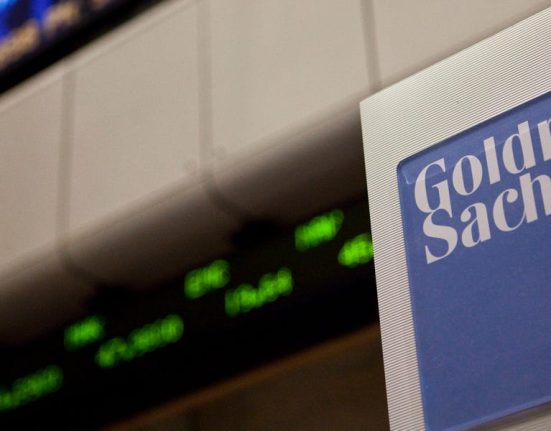PRIVATE markets, once the domain of institutional investors and 10-year, closed-end commitments, have opened to a broader audience of private wealth. Key to this transformation has been the rise of semi-liquid evergreen fund structures – perpetual private market funds with periodic liquidity windows.
These innovative vehicles include: Europe’s updated ELTIF 2.0 (European Long-Term Investment Fund) and the UK’s Long-Term Asset Fund (LTAF); US interval funds; non-traded BDCs (Business Development Companies); and real estate investment trusts (Reits).
They are fundamentally changing how private wealth investors and, retail investors in particular, access alternatives. We are entering a new era in private markets – one marked by greater access, innovation and collaboration.
Democratising access
The momentum behind semi-liquid evergreen funds is undeniable. Investors who were once dissuaded by illiquidity, large ticket sizes, and capital call complexities are finding the new structures far more palatable.
Over the past five years, the number of evergreen funds has nearly doubled to 520, representing at least US$350 billion of net asset value, Preqin data showed.
This trend aligns with a broader industry movement towards democratisation. Currently, private investors represent nearly half of global wealth – estimated at over US$140 trillion – yet account for only 16 per cent of private markets’ total assets under management, which currently stand at US$13.1 trillion.
BT in your inbox

Start and end each day with the latest news stories and analyses delivered straight to your inbox.
The runway for growth remains extensive, and semi-liquid evergreen funds are a crucial bridge to narrow this gap.
Many in the wealth management channel have embraced the semi-liquid evergreen fund structure as their preferred entry point into private markets. The funds’ open-ended nature means that capital can be deployed on day one and begin compounding sooner.
It is hard to find a private markets general partner (GP) today that is not actively exploring the private wealth opportunity set and the viability of launching a semi-liquid evergreen fund.
For private wealth intermediaries and their clients, there is a comprehensive and growing menu of private assets in semi-liquid evergreen format.
The market is populated with a diversity of opportunities across traditional strategies, multi-manager, multi-strategy and multi-asset semi-liquid funds.
We have seen launches from GPs as diverse as Apollo, Ares, Hg, Macquarie and Vista. Private banks and wealth managers are starting to manufacture their own internal semi-liquid evergreen funds of funds as an alternative to traditional closed-ended vintage programmes.
Private markets GPs are becoming ever more creative in structure, liquidity management and investment strategy to make these vehicles work for a broader investor base.
Many semi-liquid evergreen funds maintain a liquidity “sleeve” – a portion in cash or public securities – to facilitate periodic redemptions.
Often secondaries and co-investments are used to quickly deploy capital and reduce cash drag, ensuring that new inflows are put to work efficiently.
Navigating operational and regulatory hurdles
No revolution comes without challenges. Semi-liquid evergreen funds by nature combine features of open-ended and closed-ended funds, which introduces operational complexity.
GPs and their service providers must master new processes, including valuation of illiquid assets on a continual basis, managing subscriptions and redemptions and handling liquidity mismatches.
Combining liquid and illiquid components necessitates expertise ranging from establishing valuation procedures and net asset value calculation frequency to implementing mechanisms such as gates and series. Onboarding investors into these funds can also be cumbersome today.
Regulatory complexities also persist, notably through country-by-country variations.
Europe has taken a big leap with ELTIF 2.0, which provides a unified passport to market evergreen funds to retail investors across the European Union, along with tax incentives and a clearer rulebook.
The UK introduced the LTAF, and the US has longstanding semi-liquid structures – interval funds, tender offer funds, and non-traded BDCs and Reits.
Other regions are catching up: In Asia, markets such as Hong Kong, Singapore and Australia are at the forefront of adopting evergreen fund offerings, while others are still developing the necessary distribution and regulatory ecosystem.
These inconsistencies complicate efforts to distribute evergreen funds across multiple jurisdictions seamlessly.
Additionally, investor education remains a pressing issue. The term “semi-liquid” itself may inadvertently suggest more immediate liquidity than these structures realistically offer.
Clear and consistent messaging is crucial to managing investor expectations, preventing mis-selling, and ensuring that participants fully understand the liquidity profiles and risks inherent in these funds.
This is where fintech solutions platforms come into the equation, serving as outsourced product manufacturers and operations hubs, seamlessly integrating funds, private banks and fund administrators.
Through standardised regulatory compliant workflows that adapt to cross-border regulatory regimes, fintechs are critical facilitators of scale and operational efficiency.
A collaborative path
Despite these challenges, the trajectory of semi-liquid evergreen funds is decidedly upwards.
The reason for optimism is simple: These structures address a real need.
They enable wealth managers and family offices to craft portfolios that include the return potential of private equity, private credit, real estate and infrastructure without the severe liquidity lock-ups of the past.
They enable successful GPs to expand their investor base and secure stable, long-duration capital. And they create opportunities for individual investors (and their advisers) to benefit from institutional-quality assets and managers.
In short, evergreen funds are central to the democratisation of private markets – a theme that will only grow stronger.
The writer is founder and CEO, S64 Capital







